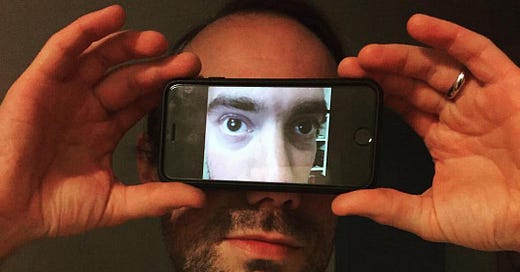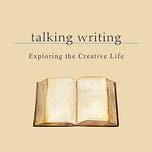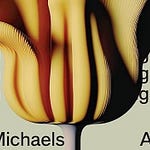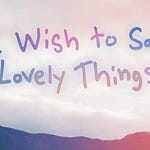I say in the intro to this podcast episode that the only way to support artists is to buy directly, which obviously leaves out platforms such as Substack and Patreon that artists are using to add a stream of income. When I wrote and recorded that, I was thinking exclusively of being paid for your art, and I’d like to emphasize the divide between that and subscriber-based content creation because I think it really puts a spotlight on what we value.
In the current climate, it’s more difficult than ever before to be compensated strictly for art, and with music in particular, paying for what you listen to is completely optional. I think that services and communities such as Substack and Patreon are amazing in providing a way for artists to monetize their material, but they’re also dependent on consistent content creation and cutting off a slice of that content to offer as a bonus to your paid constituency. It’s about the hustle. It doesn’t foster or encourage the drive to create a masterpiece over a long period of time.
As a project, Weird Music is totally out of step with the current state of art. I didn’t intend to take as long making it as I did, and I had no thoughts about how it fit into overall trends. To me, the most important thing throughout was just to make it. I’d worry about the rest once I was done.
Now that I’m coming to the end, I realize that it’s a statement about our artistic values. We value the hustle, and the art is optional.
Check out the Weird Music album on Bandcamp, iTunes, Apple Music, Spotify, and all other places where you can find music. Some of this material can also be found in the post “My Weird Music” on the Talking Writing website. For transcripts to these episodes, visit my personal Substack.
These interviews were all conducted between 2009 and 2011, and music has become even easier to find and listen to since then. When we started touring and booking shows in the mid-2000s, MySpace really enabled our entire network to develop. The ability to immediately listen to bands’ music was a huge game changer.
But, as Vice Cooler says in the following clips, “I wouldn’t want to be a band coming up now. I feel like now is a hard time to get noticed at all, for anything, even though there are things that are instantly accessible. But because of things being instantly accessible, everything’s overflooded. More competition.”
Coming up in this overflooded environment, gaining traction and standing out has been a huge challenge.
As an artist, it’s easy to feel divided about the increased availability of music for cheap or free. It’s important to keep in mind that artists are also audience members, so we all benefit from being able to listen to pretty much whatever we want whenever we want.
There’s no denying the allure of Spotify, Apple Music, TIDAL, or whatever other streaming services you use. But in terms of supporting artists, the only way to actually provide financial support is to buy directly from the artist, either from Bandcamp, from their own website, or at shows. I’ve gone through long periods of limiting myself strictly to Bandcamp.
Sometimes when I talk with artists about this subject, they get defensive because they use Spotify, and I want to be up front that I have no qualms with anyone using Spotify or any other streaming service. Even though all the streaming services offer different payment amounts per stream, they’re all laughable and therefore essentially the same. As a pay stream for any artist who’s not hugely popular, they are and should be treated as a minute passive income. And there’s no doubt it’s the main way most people listen to music these days.
But the trend toward buying physical media is ticking upward right now, and it’s still more important than ever to put that extra effort into making something nice for people to hold on to.
For information about these interviews and the people in them, please visit this post from my personal Substack.














Share this post